 Some serious beams in their eyes
Some serious beams in their eyesAnd since this was one of the cities that the Savior cursed for having so many miracles wrought in it and still not accepting him, and since the city is currently in ruins, it is a great place to talk about how we have been given so much, and how we must not let ourselves become like Chorazin.
 Jumping out of the synagogue
Jumping out of the synagogue Kaleb and Alexia sliding down the banister as leaving the synagogue
Kaleb and Alexia sliding down the banister as leaving the synagogueIt is over 100 feet above Galilee, 335 above Sea Level. The excavated area is not from Savior’s time, but from Talmudic period (Byzantine, but Jewish, so called Talmudic). Still, this is similar to what it would have been like in Savior’s day, and it is a city he was in. Chorazin expanded dramatically ca. 135 AD, most likely with refugees from Judea when Hadrian forbid them from being there. When Eusebius saw it in 3rd C it was ruins, but in 4th C it was rebuilt, and was used intil 8th C. The city was about 100 acres large. It was close to Capernaum (2 miles NW), part of the large triumvirate of cities Savior preached.
From there we went to Sepphoris. Both times we have gone through before Jeff Chadwick led both groups through. So this was my first time to do the place, and I led both groups. I don’t think I did a spectacular job, but I did an okay job. This city has amazing mosaics. It has a great example of a stone manger from the time of the Savior.
 Sabrina in the stone manger with students. I was unaware she was in one of the antiquities, I would have stopped her, or course.
Sabrina in the stone manger with students. I was unaware she was in one of the antiquities, I would have stopped her, or course.Sepphoris has a great example of a triclinium, the kind of table arrangement that was probably what Jesus used at the Last Supper. The beautiful mosaic that is called the Mona Lisa of the Galilee (though frankly it is better than the Mona Lisa) is in there.
 The place they set out for a triclinium arrangement as marked out on the mosaic floor
The place they set out for a triclinium arrangement as marked out on the mosaic floor The Mona Lisa of the Galilee. I think she is better, and they did it by putting together a ton of little stones. Impressive.
The Mona Lisa of the Galilee. I think she is better, and they did it by putting together a ton of little stones. Impressive.Sephhoris is also the place that was the capital of Galilee while the Savior was growing up. Since he and his father were builders, and since a lot of building was going on there, and since it is close to Nazareth, this is a likely spot he may have worked in as a youth. And from there you can see Cana, where he performed his first miracle. This struck me, so I contrasted the kinds of works he may have done with his hands there, and the kind of work he did by a different power at Cana, and talked about which one was really his mission and what he was really all about during his life. We also talked about how this was the town in which the Mishnah was compiled.
 The view of Cana from Sepphoris
The view of Cana from SepphorisWe worked out way down to the synagogue, where I spoke about Sadducees, and the use of foreign elements to represent important religious things, tying it in to the facsimiles of the Pearl of Great Price. We spoke of the spiritual progression represented on the floor of that synagogue, and how we probably see that same progression in the facsimiles. All in all, I think it was a good stop.
 The zodiac on the floor of the synagogue in Sepphoris
The zodiac on the floor of the synagogue in SepphorisIt is 980 ft. above sea level, you have climbed out of that basin in which the Sea of Galilee sits and gone a long ways west and a long ways up. After Pompey conquers Judea in 63 BC, Sepphoris was made Roman capital of Galilee. Stonemasons/builders like Joseph or young Jesus could have worked at a place like this. Herod Antipas had his seat in Sepphoris until he built Tiberias. It had a cardo and many nice villas. After the Bar Kokhba revolt and expulsion of Jews when Jews were evicted from Judea, the Sanhedrin moved to Sepphoris. The Mishnah completed there ca 200 AD under Judah Ha-Nasi. There is textual evidence for 18 synagogues here. Byzantine Christianity built churches here in the effort to create the “Holy Land” in 5th C. Crusaders also built a small citadel here.
 These long days wore us all out. The bus rides sometimes gave us a chance to recharge. I fell asleep on the way to Akko, and was woken when we got there, but was still pretty groggy as we tried to get things going.
These long days wore us all out. The bus rides sometimes gave us a chance to recharge. I fell asleep on the way to Akko, and was woken when we got there, but was still pretty groggy as we tried to get things going.After that we went to Akko. There I led both groups as well. We went through some of the cool crusader history of the place. It had long been a port, and was even mentioned by the Egyptians in Abraham’s day. But it became most important under the crusaders, who made it into a huge port, and then, when they lost almost everything, it was the scene of an important comeback. Richard the Lion Heart was part of a group that lay siege to Akko in an attempt to gain back much of the kingdom. Their siege was also laid siege to by Saladain, so that there were two levels of siege going on.
 Jacob killed me in a sword fight in the crusader ruins
Jacob killed me in a sword fight in the crusader ruins The family inside a crusader hall
The family inside a crusader hallEventually the crusaders won, and took over much of the coastal area. They failed to take over Jerusalem, and Richard worked out a deal with Saladin. The crusaders maintained the coastal area, but pilgrims were given safe passage and access to the holy sites in Jerusalem. The kingdom that the crusaders then had was known as the Kingdom of Akko, and Akko was its capital. It became an important center for the Hospitalars and Templars. Since the crusaders had no ships they had relied on Italian merchants to get to the Holy Land. The price was that these merchants could have space in Akko and could base operations there tax and duty free. This turned the place into a serious trading port, and the merchants became the most powerful groups in the city, and had wars with each other. This eventually led to their undoing as they convinced a crusader lord to massacre a Muslim caravan. Akko again came under siege, and eventually fell. The Knights Templar escaped through their tunnel to their keep, and survived there for some time afterwards, but they eventually fell as well.
 Fencing with Ashley in Akko
Fencing with Ashley in Akko Fencing with Angela in Akko
Fencing with Angela in AkkoWe walked around and saw some of the great ruins. I had a sword fight with a number of people. We went through the Hospitalar tunnel and the Templar tunnel. We spent time in great halls. We went to the sea wall, and then to the beach of the Mediterranean Sea for a while, and then went home. It was a great day.
 We returned in time for one last beautiful sunset over the Sea of Galilee
We returned in time for one last beautiful sunset over the Sea of Galilee






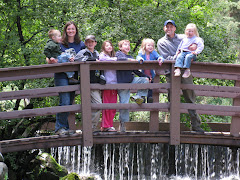

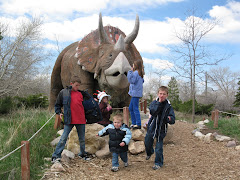
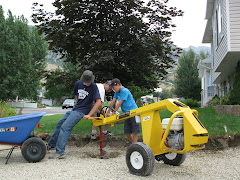
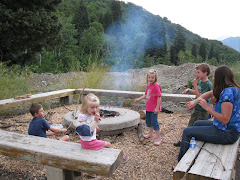
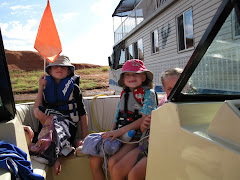





No comments:
Post a Comment